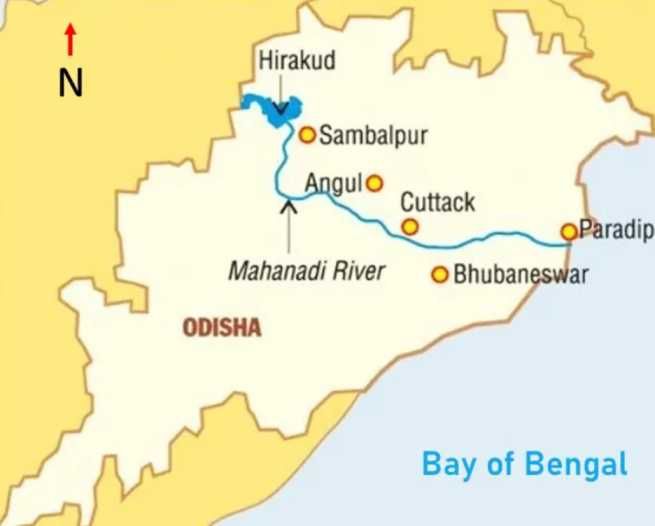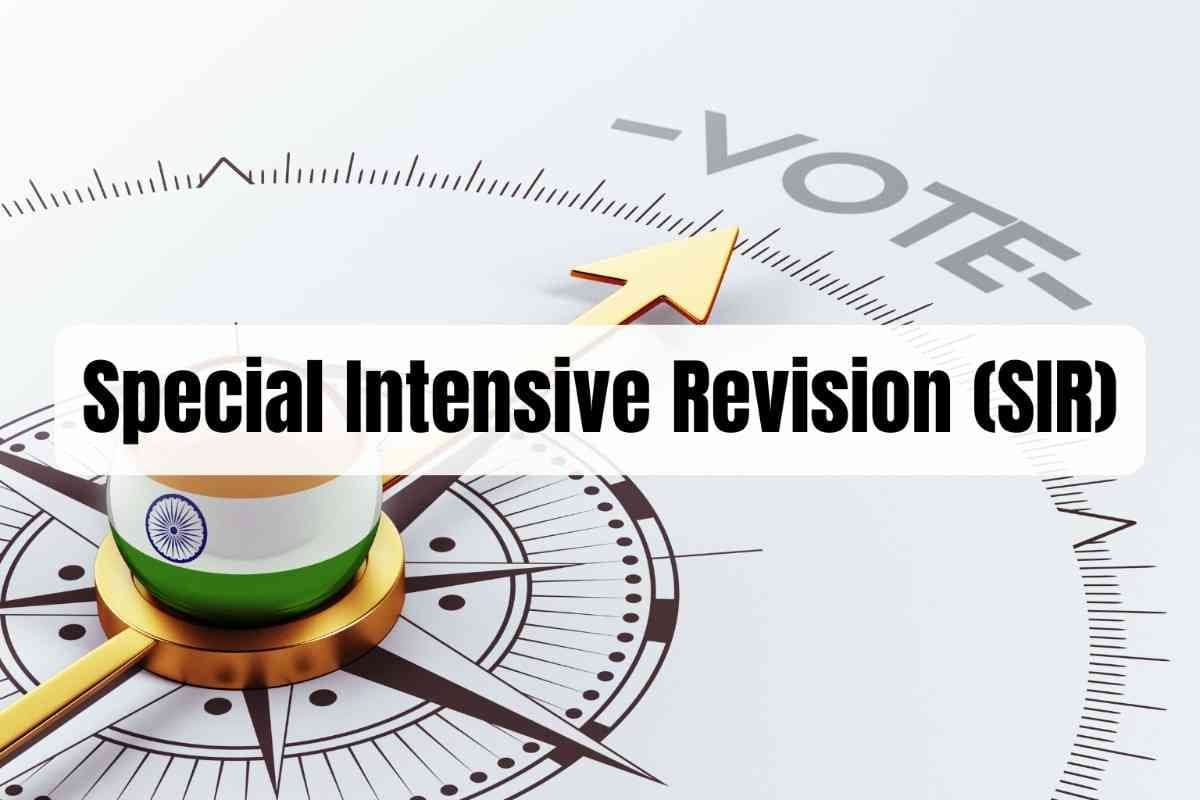Mahanadi River Inter-State Water Dispute
Aug, 2025
•4 min read
Why in the News?
After years of legal disputes over sharing the Mahanadi river water in a tribunal, Odisha and Chhattisgarh have now agreed to work towards resolving the issue amicably through mutual discussions.
Why Cover This Topic for UPSC?
- Important for GS I & GS III – Rivers, water resources, environment
- Linked with current affairs – Odisha–Chhattisgarh agreement
- Relevant for Polity – Inter-State Water Disputes Act, the tribunal system
- Useful for Essay & Ethics – Resource sharing, cooperative federalism
- Covers Geography optional topics.
About the Mahanadi River
The Mahanadi River is one of the most important rivers of peninsular India. Known as the “great river” (from Sanskrit Maha = great, Nadi = river), it has been central to agriculture, culture, and settlements in eastern India. Famous for its high silt load and historical floods, it is a lifeline for millions.

- Type: Major east-flowing river of peninsular India and empties into the Bay of Bengal.
- Length: 851 km (494 km in Odisha).
- Origin: Northern foothills of Dandakaranya near Sihawa in Raipur District, Chhattisgarh, at 442 m elevation (Amarkantak Hills, Bastar Plateau region).
States it Flows Through:
- Chhattisgarh – upper & middle basin
- Odisha – lower basin & delta
- Minor portions in Jharkhand, Maharashtra & Madhya Pradesh
States in the Basin Area:
- Chhattisgarh – 52.42%
- Odisha – 47.14%
- Maharashtra – 0.23%
- Madhya Pradesh – 0.11%
- Jharkhand – 0.1%
Tributaries of the Mahanadi River
- Left Bank Tributaries: Seonath, Hasdeo, Mand, Ib
- Right Bank Tributaries: Ong, Tel, Jonk
Let’s take a closer look at the significance of the Mahanadi River.
Significance of the Mahanadi River
The Mahanadi is central to eastern India’s agriculture, livelihoods, biodiversity, and cultural heritage. Here are the key ways it supports the region:
- Agriculture Lifeline – Irrigates vast stretches of fertile land, especially in Odisha’s delta region.
- Water Supply – A Major source of drinking water for towns and villages along its course.
- Hydropower & Dams – Home to the Hirakud Dam, one of the world’s longest, which generates electricity and controls floods.
- Flood Control & Silt Deposition – Though known for past floods, its silt load enriches soil fertility.
- Fisheries & Livelihoods – Supports inland fisheries, providing income and food security.
- Cultural Significance – Integral to festivals, traditions, and local identity in Chhattisgarh and Odisha.
- Biodiversity Support – Sustains diverse aquatic and wetland ecosystems.
Must cover this recent current topic here: Mount Lewotobi Laki Laki: Indonesia's Active Volcano
The Mahanadi Water Dispute
The dispute between Odisha and Chhattisgarh centres around sharing the Mahanadi’s waters. Odisha claims that the reduced flow has harmed its people and environment, while Chhattisgarh asserts its rights based on the catchment area.
Odisha’s Concern:
- Sharp decline in the Mahanadi’s flow into Odisha.
- Blames Chhattisgarh’s upstream dams, barrages, and rising water usage.
- Impact on irrigation, drinking water supply, and coastal ecology.
Chhattisgarh’s Stand:
- Holds 52.9% of Mahanadi’s total catchment area.
- Nearly 90% of the catchment up to the Hirakud Dam lies in its territory.
- Claims the rightful use of river water for its needs.
In 2018, following Odisha’s petition, the Supreme Court directed the Centre to set up the Mahanadi Water Disputes Tribunal (MWDT), which was constituted on March 12, 2018, under the Inter-State River Water Disputes Act, 1956.
Master UPSC Current Affairs with Monthly Magzine
Current Affairs Simplified: Dive deeper into topics & practice MCQs
Download Monthly PDFsWhy Amicable Settlement Matters in Water Disputes
Resolving water disputes through mutual agreement benefits both states and strengthens governance.
- Less burden on tribunals and the judiciary
- Promotes cooperative federalism and interstate harmony
- Ensures the timely availability of irrigation and drinking water
- Reduces project delays and economic losses
- Protects ecological balance and shared river health
Confused about any key terms or definitions in Polity? Just ask it, and SuperKalam AI will explain it in the simplest words.
Recent Developments in the Mahanadi River Dispute
Odisha and Chhattisgarh have told the Supreme Court they are ready to settle the Mahanadi dispute through talks. A joint committee, led by the Central Water Commission under the Union Jal Shakti Ministry, will include senior technical officers from both states. The committee will hold regular discussions and work out a mutually beneficial solution.
Also read: Soils of India: Classification, Significance & Recent Crisis.
Way Forward
To ensure sustainable and dispute-free use of the Mahanadi, both states should:
- Strengthen joint river management mechanisms.
- Share real-time hydrological data for transparency.
- Adopt water-use efficiency in irrigation and industry.
- Promote the eco-restoration of riverbanks and wetlands.
- Encourage community participation in water conservation.
- Develop long-term agreements factoring in climate change impacts.
Such steps will resolve current tensions and also secure the Mahanadi’s resources for future generations while fostering lasting inter-state cooperation.
Must read: RECLAIM Framework for Mine Closure: Key Features, Significance, and Challenges
Unlock your UPSC success with SuperKalam!
Get daily news analysis, instant doubt clearance, customized study plans, unlimited MCQ practice, and fast Mains answer feedback. Join thousands of toppers learning with India’s AI-powered mentor today!
Download the SuperKalam App now — your smart partner for cracking UPSC IAS!
Related Blogs
![Vijay Diwas 2025: Why 16 December is Celebrated [UPSC Current Affairs]](/_next/image?url=https%3A%2F%2Fblog-media.superkalam.com%2FVijay_Diwas_2631842d69.jpeg&w=3840&q=75)
Vijay Diwas 2025: Why 16 December is Celebrated [UPSC Current Affairs]
Dec, 2025
•6 min read

Special Intensive Revision (SIR) of Electoral Rolls: Definition, Objectives, Significance, & Challenges
Dec, 2025
•4 min read

UNICEF Day 2025: 79 Years of Global Commitment to Child Rights & Protection
Dec, 2025
•4 min read